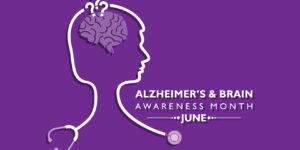THP Staff
If you’re familiar with medical cannabis, you’ve likely heard about its numerous benefits for cancer patients. While our ability to conduct clinical trials on the use of cannabis for the treatment of cancer in the United States is hindered by its’ Schedule 1 drug classification, there are studies being conducted in other countries that are showing promising results. One such study was published in November 2014 in Molecular Cancer Therapeutics and conducted at St. George’s University of London’s Department of Oncology—the study found that the use of cannabinoids, specifically delta 9 tetrahydrocannabinol (THC) and cannabidiol (CBD), may be useful in treating high-grade gliomas and potentially slow the progression of the disease.
What is a glioma? While there are many different kinds of brain cancer, 80% of malignant brain tumors are gliomas—gliomas tend to be fast-growing, aggressive and difficult to treat. They can occur in the brain or on the spinal cord as a result of excessive proliferation of abnormal cells in the nervous system that aren’t involved in signaling. At the time of the study, in the United Kingdom the 1-year survival diagnosis of a high grade glioma was 36% and the 5-year survival was only 10%. Standard treatments for glioma have been unsuccessful in most patients which is what prompted the study to be conducted at St. George’s University of London’s Department of Oncology.
The study was split into an in-vitro portion (cells outside of the body) and an in-vivo portion (cells inside the body)—for each one the effects of THC and CBD in pure form, THC and CBD in whole-plant form and cannabinoids combined with radiation were evaluated. It was found that CBD was more effective in inhibiting cell growth when in its pure form, whereas THC was more effective in its whole plant form. The pure form of CBD contained >96% CBD and no other cannabinoids, while the whole-plant THC contained 60-72% THC and the rest was other cannabinoids like CBD, CBG, etc. The individuals conducting the study also found that when used together, CBD and THC had even greater effects for glioblastoma astrocytoma reduction—it is believed that this could be as a result of the Entourage Effect of all the cannabinoids working synergistically together.
According to the study, the most effective method for reducing the number of high grade glioma cells was the combination of cannabinoids and radiation. Cells were pre-treated for 4 hours with either pure CBD, pure THC or a combination of pure CBD and THC before undergoing radiation. Once again, the combination of CBD and THC proved most effective: “Additionally, 5 hours post-radiation, high grade glioma cells that had been treated with cannabinoids had more DNA damage than cells that had been treated with radiation alone (this is a positive result, given that the point of radiation treatment is to damage the DNA of malignant cells in order to cause programmed cell death).”
So what does all this mean if you’re looking to use cannabis to treat a high-grade glioma? That a combination of CBD, THC and radiation is needed to see a significant reduction in glioma cells and cause programmed cell death. Each patient will need to work with their doctor to determine the right ratio of cannabinoids for their specific tumor: “I wouldn’t say that a 1:1 ratio is the need. I would say that each individual, each patient, needs a particular ratio of cannabinoids. Or, at least that’s what we have seen in our clinical models of cancer. Not only us, but the rest of the research groups that are working in this field. What we see is that in some types of tumors, for instance, glioblastoma, brain tumors, in these cases more THC works better than a 1:1 ratio.” (Dr. Cristina Sanchez) In terms of the most effective way to take your cannabis, we would recommend using cannabis oil orally—you can either use the tacking method of placing small drops of oil along the gum line, put it underneath your tongue or simply swallow it straight out. The benefit of cannabis oil is that you can actually measure out your dose to ensure that you’re getting the proper amount of cannabinoids each day, throughout the day. Tinctures are another great method of medicating, as they also allow you to take a precise dose of cannabinoids sublingually or in a drink. Tinctures will also likely taste better than the cannabis oil itself, so if nausea is an issue you might want to opt for a tincture instead of oil. For most patients a 60-90 day regimen is recommended, as that allows for the body to adjust to taking higher levels of THC without experiencing negative side effects.
Just like with any other change in medication, you’ll want to be as open with your doctor as possible about what you’re taking, how many milligrams & how often you’re taking it—this will help them better understand how the radiation is interacting with the cannabinoids and they’ll also have a better idea of what to look for in scans. While we aren’t doctors here at The Higher Path, our highly trained Cannabis Consultants are always happy to answer your questions about CBD and THC, help you find the right product for your needs and make recommendations for dosing. It’s important to remember that everyone’s body is different, so there will be some trial and error involved—be patient and remember that we’re here to help you through the process! If you or a loved one has questions about using cannabis for brain or any other type of cancer, you can email [email protected] to setup an appointment with one of our senior Cannabis Consultants!
SOURCES
(1) Study: Cannabis Offers Possible Treatment for High Grade Gliomas
(2) The Combination of Cannabidiol and D9-Tetrahydrocannabinol Enhances the Anticancer Effects of Radiation in an Orthotopic Murine Glioma Model
(3) New Research Confirms Cannabis Kills Brain Cancer, NOT Your Brain
(4) GW Pharmaceuticals Achieves Positive Results in Phase 2 Proof of Concept Study in Glioma
DISCLAIMER: The information on this site is not intended or implied to be a substitute for professional medical advice, diagnosis or treatment. All content, including text, graphics, images and information, contained on or available through this web site is for general information purposes only. Always consult a doctor before making any health changes, especially any changes related to a specific diagnosis or condition.



